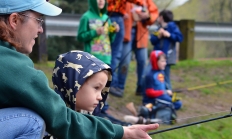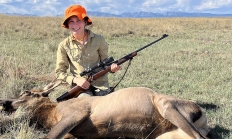Search myodfw.com

Oregon's recreational fisheries for Pacific halibut and bottomfish are constrained by bycatch of yelloweye rockfish, an overfished species. Many of the regulations on these fisheries exist to keep bycatch of yelloweye rockfish within sustainable limits, in order to help the stock recover (for example, depth restrictions in the bottomfish fishery, and no lingcod or rockfish during all-depth halibut days). ODFW encourages anglers to reduce impacts by using descending devices to release yelloweye rockfish, and better yet, to avoid areas where they might be caught.


Cabela's - 7555 SW Nyberg St Tualatin, OR 97062

Conference room at Thompson's Sanitary Service - 7450 NE Avery St. Newport, OR 97365

ODFW EE Wilson Wildlife Area - 29555 Camp Adair Rd Monmouth, OR 97361


Wenaha Wildlife Area, near Troy, OR 45°56'46.3"N 117°26'12.7"W

Find the 2023-24 weekly statistics for waterfowl and upland game birds at Klamath Wildlife Area.

March 5, 2025 Coos and Curry counties Coquille Valley Wildlife Area (CVWA) Coquille Valley Wildlife Area (CVWA) in Coos County is open to public access. Permits for access are required and are available, free of charge, at the kiosk located in the parking lot along North Bank Road. You must access CVWA through this point. Please fill out the upper half ("A" half) of the permit and deposit it in the slot located on the post of the kiosk. Sign and carry the lower half ("B" half) with you while you enjoy CVWA. At the end of your visit please
EE Wilson Wildlife Area - 29555 Camp Adair Rd Monmouth, OR 97361
EE Wilson Wildlife Area - 29555 Camp Adair Rd Monmouth, OR 97361
Day 1: Mid-Valley Clays - 6181 Concomly Rd NE, Gervais; Day 2: Sauvie Island Wildlife Area - Mudhen


